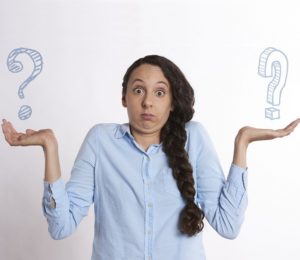FP in Kotlin: Defining a Pipe Operator
- June 02, 2023
- 4013 Unique Views
- 3 min read
There's no support for the pipe operator |> in Kotlin, so we have to come up with a custom and clean implementation for this function.
Defining a Pipe Operator
Next, one consistent and clean implementation is given for a pipe operator in Kotlin.
Finding a Suitable Symbol
First, I wanted to use the |> pipe symbol commonly used in functional languages, but > is not a supported character: Name contains illegal characters: >.
Then, I tried to use the other common | pipe symbol with no full success:
Name contains characters which can cause problems on Windows: |.
To avoid issues, I either had to design a simple symbol or use a verbose pipe operator name.
So, I took my design from How I Standardized Hyphen and Pipe Symbols on File Names where I designed the standards for (among others) the pipe operator on file names. Notice that file systems also require simple symbols to work with, so the standard from my previous article was what I was looking for.
Now that the pipe operator symbol is established to ---, the implementation is next.
Language Features
It's required to employ:
It's useful for the given example that shows the operator usage:
Operator Definition
First, the --- operator is defined:
Pipe.kt
infix fun <X, Y> X.`---`(f: (X) -> Y): Y = f(this)
Definition of the Pipe ("---") Operator
Where:
---is a special function name escaped within backticks "``" that
denotes the "pipe operator" as described before.- Two generics
XandYare defined to represent the LHS and RHS of the
operator. - The
infixnotation is used on the extension function---defined for
allx in X. There are two parts here:- The extension function.
- The infix which provides the syntax sugar.
forall x in X, y in Y, the lambdaf: (X) -> Yis defined as the
operator argument. So, we have:- The constant (LHS) is given by
X. - The function (RHS) to be applied is given by
f:X \to Y.
- The constant (LHS) is given by
---returnsY—result of applyingfto somex.---'s image is defined asf(this)wherethisis an element ofX.
That was the definition of the pipe operator.
Usage Example
Now, to address a concrete example to use this new feature, I implemented a
basic DSL for an Article domain type.
Pipe.kt
data class Article(val title: Title, val content: String)
@JvmInline
value class Title(val value: String) {
override fun toString(): String = value
}
val title: (String) -> Title = { Title(it) }
Definition of an "Article" DSL
So, to test the code, I will add a user input title that is not cleaned, some
content, and I'll also define more functions with transformations, so we can
pipe them.
fun main | Pipe.kt
val inputTitle = "FP in Kotlin: Defining a Pipe Operator " val inputContent = "Lorem ipsum dolor sit amet..."
Sample User Input for Example Snippet
Then, we'll have some useful example transformations:
fun main | Pipe.kt
val clean: (String) -> String = { it.trim().replace("\\s+".toRegex(), " ") }
val uppercase: (String) -> String = { it.uppercase() }
val markdownTitle: (String) -> String = { "# $it" }
val formatTitle: (String) -> String =
{ it `---` clean `---` uppercase `---` markdownTitle }
Transformations for Example Snippet
Finally, we can create an Article with title and content:
fun main | Pipe.kt
print(
Article(
inputTitle `---` formatTitle `---` title,
inputContent
)
)
Building an "Article" for the Example Snippet
With this, a title String can be transformed into a Title domain type by
piping it to the transformations declared:
- In
formatTitle:clean,uppercase,markdownTitle. - Then (in a higher-level view), applying
formatTitleto the rawString
input and transforming this value into aTitlevia the constructortitle:
inputTitle---formatTitle---title.
The program's output is:
Article(
title=# FP IN KOTLIN: DEFINING A PIPE OPERATOR,
content=Lorem ipsum dolor sit amet...
)
Program's Output (Formatted)
The example code is here.
Functional Language Design
Notice that we're using backticks to define the infix operator like functional languages like Purescript do and employ this feature. It's also preferred to use normal identifier names (i.e., alphabetic) instead of predefined symbols (e.g., +) to avoid abusing the syntax.
As said above, the pipe can be commonly denoted by | or |>. Since pipe is a universally abstract concept, it must be terse, so defining a symbol for it is a good design. For user-specific languages, alphabetic identifiers should be used, as said above.
Custom Pipe in Kotlin
This was the design of a custom pipe operator that can be used in Kotlin, and some insights about functional languages as well.
Options for a Pipe Operator in Kotlin
As developed before, we faced many constraints in Kotlin for getting a language design that enables us to use the pipe operator.
So, we have open possibilities to add this feature to our codebase, and I developed one ("---") that keeps consistent with the newest MathSwe standards I had defined before.
Originally published at blog | mathsoftware.engineer
Don’t Forget to Share This Post!











Comments (1)
Java Weekly, Issue 493 | Baeldung
3 years ago[…] >> FP in Kotlin: Defining a Pipe Operator [foojay.io] […]